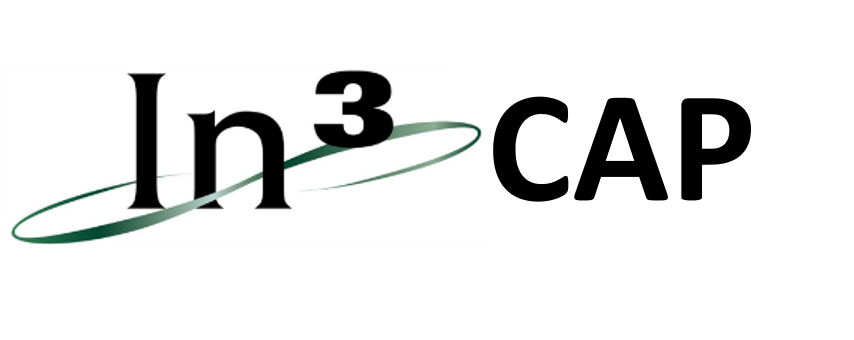Quick Guide to Completion Assurance Guarantees: How to Obtain One
What it is for: We offer  a streamlined and direct process to finance mid-market “impact” infrastructure projects using an innovative structure. Compared to the traditional route this has strong advantages. The purpose of the guarantee is outlined here, in our FAQs.
a streamlined and direct process to finance mid-market “impact” infrastructure projects using an innovative structure. Compared to the traditional route this has strong advantages. The purpose of the guarantee is outlined here, in our FAQs.
There are several pathways available to obtain a qualifying guarantee. There is no initial cost when you do it yourself (DIY), and a few options that are effectively “free” (aside from the effort to source and facilitate) such as through your own bank, if you have sufficient asset depth, or via a “sponsor” (such as an EPC, OEM or Construction firm under contract for their products or services) or a Sovereign Guarantee when working in a country that can deliver one.
See also: Tips for Sourcing Guarantees
The remaining options all cost money, such as “Providers” who charge at least 6% plus 1-2% fees (warning: too many of these so-called providers are unable to deliver), which we do not recommend. If an arm’s length provider is asking for money ahead of delivering the instrument, be careful. Unfortunately, many are just operating fee scams, so paying after instrument delivery balances risks and makes more sense.
Why we use financial guarantees for project funding
Project total funding via CAP must be at least $25m, with $50m or above strongly preferred. CAP funding uses a Completion Assurance guarantee, a type of “demand guarantee” that, once obtained, saves everyone tremendous time and energy compared to the traditional route. It is relatively safe for any non-fraudulent developers and guarantors seeking to secure funds through CAP. FAQs for more on this.
Note that for select project pipelines, In3 offers premium “done for you” (DFY) services when projects are top-notch (investment-ready), scalable, focused on our sweet spot, from experienced developers with unassailable credentials, including a proven track record of success and that deliver well above-average, triple-bottom-line returns.
SYNOPSIS: For owners/developers or project fundraisers …
- With assets that can be used for a collateral pledge to a bank, or gain the bankers’ endorsement with our alternative guarantee, follow our 3-step process, outlined below, starting with a draft of the proposed instrument, then apply and upload the package of materials along with any questions.
- For owners/developers that have few or no available assets, the first step in this process serves as a feasibility test — requesting a “specimen” financial instrument based on our template from a sponsor’s bank (or if you source it yourself, make sure the involved bank is legitimate, not blacklisted) to put this proposed guarantee on the table. Guarantee Sourcing Tips
Send the proposed instrument to In3 via our onboarding system or Email and we will check with our underwriting bank(s) for acceptance/approval. With a well-informed banker on your side, yours or a sponsor’s, they will accept your application and understand your request when you share our template of standardized instrument “verbiage” (wording) and explain it is for project finance.
The bigger picture includes just two additional items — so 3 things total — to enable this streamlined pre-qualification:
- First, a draft guarantee (based on our template), which can be leveraged somewhat, used to assure project completion. This is a financial instrument, either a “standby” Letter of Credit (SbLC) or Bank Guarantee (BG) sent via customary Brussels SWIFT, or another type of “demand” guarantees. All options:
- Standby Letter of Credit (SbLC) or Bank Guarantee (BG), the most common; can also be entitled a Payment Guarantee or Performance Guarantee (PG) so long as it otherwise adheres to our BG/SBLC verbiage
- Becoming popular: an endorsed Promissory Note with a bank’s “Aval” (AvPN)
- In certain countries, a Sovereign Guarantee (SG) from the Ministry of Finance can be issued and then confirmed by a local bank
- Less common, but also acceptable: An ISIN-registered Corporate Bond (not an insurance product, but instead a form of securities), which must be top rated.
- The monthly funding draw schedule, based on consistent (or increasing) cash requirements to reach “Commercial Operation Date” (COD) — that is, once construction has been completed and project(s) commissioned to begin commercial operation. See example on page 3 of this PDF.
- An RWA letter or authenticated Email from the involved banker(s) stating their intention to issue or endorse the proposed guarantee – any of 3 types. RWA is short for Ready, Willing and Able. Assume an SbLC/BG of perhaps 70% (minimum 30% coverage) that remains in force until COD, at which time it is allowed to expire, unblocking any underlying asset pledged as collateral.
Based on this, we verify that the selected banking institution will provide the guarantee and the form, size, and strength of it. We provide free guidance on what’s preferable, but you get to explore possible arrangements for delivering the guarantee, once under contract, to unlock your funding.
More about Bank-involved Guarantees
What bank is best? In practice, any bank will do (low rated, unrated but authorized/licensed and legitimate commercial banks, even smaller credit unions in the US would work), but we recommend starting with any bank that has already done its KYC on the party requesting the guarantee. An established customer of the bank will usually get a faster and more measured response, saving time.
New bank relationships can also work, as any experienced commercial banker will understand these instruments (if not, read Communicating with Bankers so you are prepared the next time). There is a lot of diversity with bankers, however, so it is important to not accept the first “no”. They often throw obstacles in the path to see if you are committed.
Does the selected bank need to be a Tier 1 (large, global bank)? No, that’s not necessary. Note that larger banks typically have multiple divisions, so make sure you are talking to the right one — NOT the “trade” division, but instead bankers that work with the division that handles private commercial banking, or wealth management. You will be better understood within private wealth management divisions, and otherwise cause considerable head-scratching and confusion, due to inherent silos most larger banks have, and confused banker rarely do what you ask.
In other words, within bigger banks (so-called “Tier 1”), you have to find the right bankers … then the above checkpoints get satisfied more quickly and our partners will usually complete due diligence within just a few weeks. If all goes well, you will negotiate and sign the funding contracts within 30 days.
What if you have no assets available and need to involve a “sponsor? Be sure to request the sponsor presentation materials or see below for a preview of what assets can be used to secure this guarantee.
Not sure if In3 CAP funding is right for you? Consider these conditions when In3 CAP is your best or only option.
Financial Guarantee Options
In addition to Doing It Yourself (DIY), outlined above, here is more advanced information to continue down that path, the only option presently available with additional costs.
Second, there is a service that would enable owners/developers and their agents/sponsors/promoters to pinpoint the best option(s) for securing a guarantee, largely based on the bespoke merits of the project or portfolio of projects seeking funding. More
Finally, In3 also offers premium Done For You (DFY) guarantee services for clients that meet our criteria, described via a checklist that shows a higher underwriting standard, closer to traditional project finance, must be met, and that DFY is only suitable for developers with direct experience in the sector/market/geographic location.




